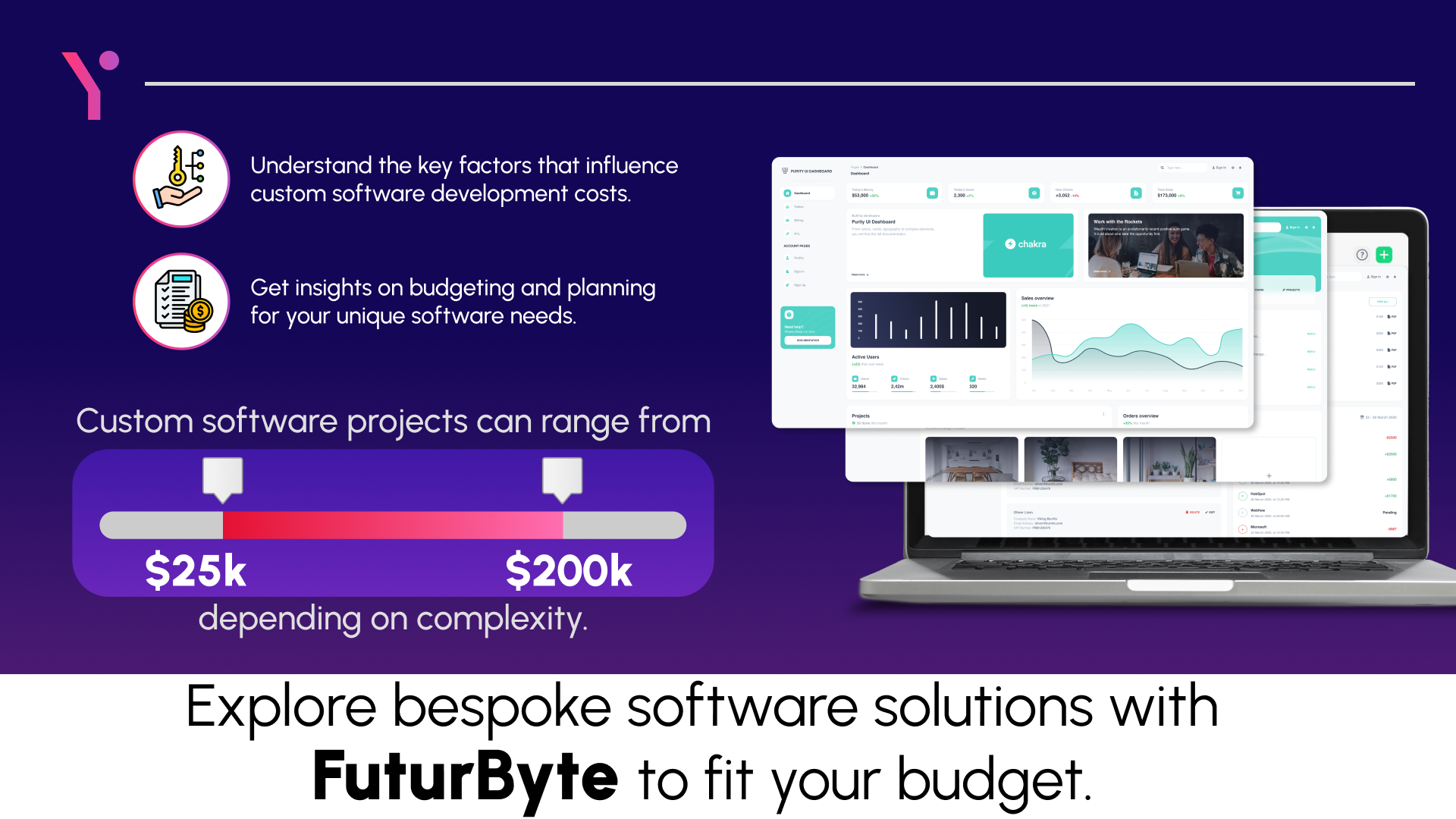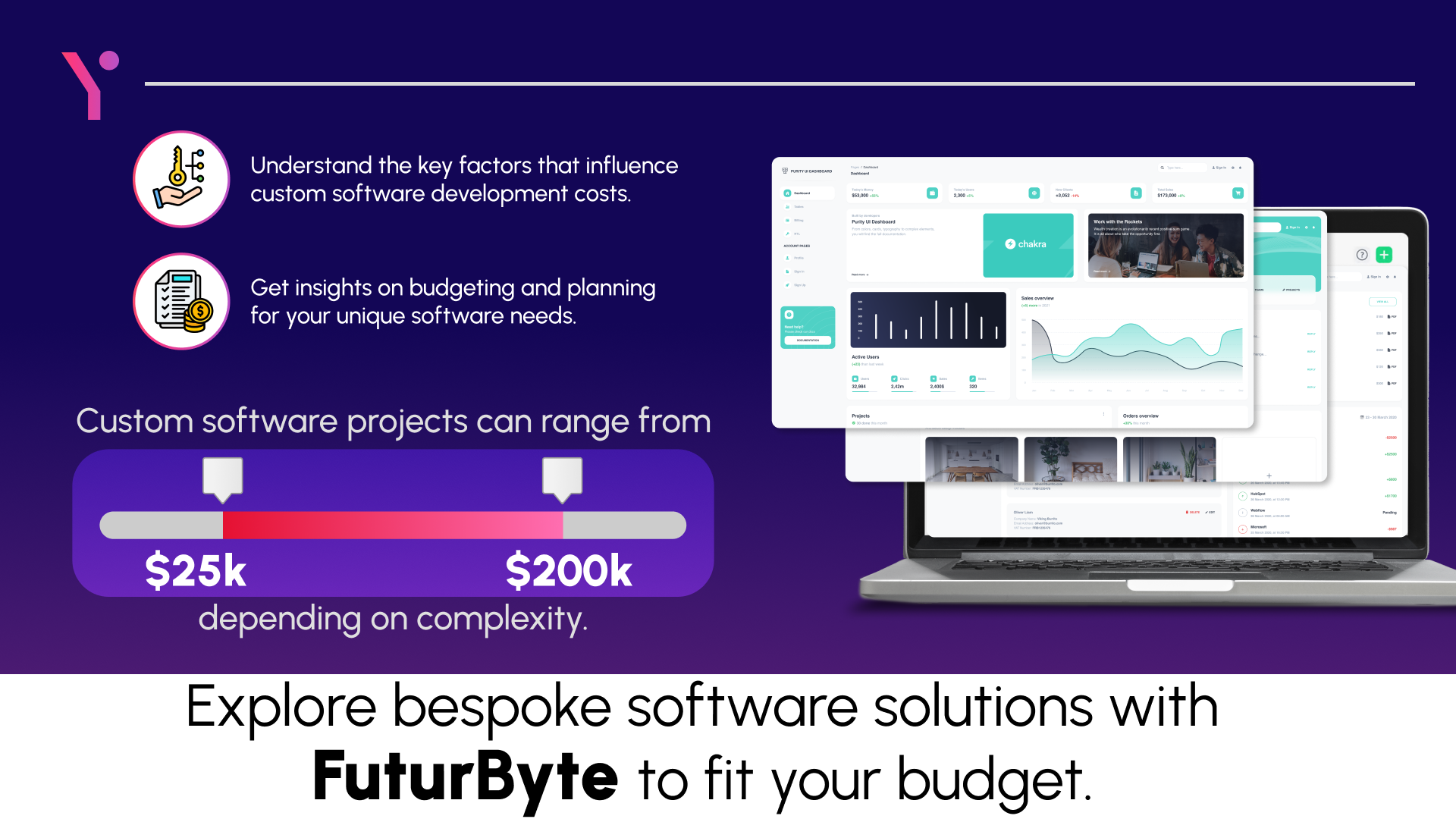Real Estate Listing Management Software: Streamline Your Operations
“How much does custom software development cost?” This question is asked by developers and companies across the globe. The fact is that a host of factors, such as outsourcing, features, and design, influence the cost.
How much does custom software development cost? Well, deciding the exact cost of custom software development is a complicated activity. There are plenty of factors that affect the final pricing. If you want to grasp the vital elements that influence the cost, you must take note of the below-mentioned table:
| Factor | Influence on Cost |
Technology Stack | Complex technologies can raise costs |
Project Scope | Large projects usually cost more |
Design and UX | Sophisticated design can raise the budget |
Development Team | Experienced developers demand higher rates |

Let’s look at the projected cost of custom software development:
| Project Type | Assumed Cost Range |
A basic mobile app | Up to $50,000 |
E-commerce website | $50,000 to $150,000 |
Custom CRM system | $100,000 to $300,000 |
Enterprise Software | $250,000 onwards |
Factors that Affect Custom Software Development Costs
“How much does custom software development cost?” This is a question that is usually inquired by businesses that intend to take the development route. As it turns out, the answer lies in the proper understanding of the multifaceted factors that play a part in the price tag.
Project Complexity and Scope
The intricacy, scale, and size of a software project prominently influence its cost. A standalone, simple application will obviously be less expensive when compared to a complicated and enterprise-wide system. The overall integrations, functionalities, and features also influence the development effort and the cost.
Technology Stack
The selection of cloud platforms, databases, frameworks, and programming languages can prominently affect the project’s budget. It is commonly seen that emerging technologies have a higher development cost associated with them. This is because of their potential challenges and learning curve.
Some tech experts are of the view that the technologies stated here will see a decrease in costs in the near future. This is a debatable issue. Nevertheless, one cannot deny the importance of technologies for software development at various levels.
Development Team
The location, expertise, and size of the development team are vital factors. Any team that consists of experienced developers will usually command higher rates. Furthermore, a team’s geographic location also influences labour costs, as developers situated in specific regions are more affordable than those in other regions.
Here, those looking to perform the software development activity often go through a dilemma. They have to put a fine balance between affordability and quality. This basically means avoiding a service that is very cheap but lacks in quality. Here, it is best to go through the portfolio of the development teams.
User Experience (UX) and Design
Many usually underestimate the impact of design on software development costs. Well, the fact is that design plays a vital role here. In other words, a properly designed user interface (UI) and a phenomenal user experience (UX) have the potential to improve user satisfaction. At the same time, they demand a prominent degree of time and resources.
Some UI and UX experts argue that it is best to take a cue from your competitors before going with any UI and UX. This is actually a very good practice that allows any organisation to better understand its target audience or understand what is being appreciated nowadays.
Common Pricing Models
Any individual or organisation that seriously wants to address the “how much does custom software development cost” question must apply a host of pricing models. Note that every model has its own set of plus and minus points.
Fixed Price Model
The highlight of this model is that the overall project costs are agreed upon upfront. Additionally, this model presents you with predictability and clarity for clients. At the same time, if the project requirements change dramatically, then this can be risky for the development teams.
Material and Time Model
Here, clients are responsible for paying for the development team’s materials and time utilised. It offers some degree of flexibility but demands detailed tracking of expenses and hours.
Dedicated Team Model
In this model, a dedicated development team is hired on a long-term basis. It may present you with close collaboration, but it is usually an expensive choice. Still, some experts are of the opinion that this model is going through a “revolution” nowadays as you can find somewhat affordable choices. So, if you are interested, then it is best for you to do your research here.
Budgeting and Cost Estimation
The accurate estimation of the custom software development’s cost is vital for proper budgeting. Dividing the project into phases and putting a cost to every phase will offer a viable and practical financial picture.
Note that a cost-benefit analysis is vital to justify the investment. When a business is able to evaluate the expected return on investment (ROI), it can make informed decisions regarding software development projects.
Tips for Cost Optimisation
Any business that wants to properly manage software development costs while keeping up with quality must take note of the following strategies:
Give Priority to Features and Phases Development
Minimum Viable Product (MVP): Launch with a basic-level version and present additional features based on performance and user feedback.
Phased Development: Divide the project into manageable phases. This will make way for cost control and iterative development.
Core Functionality Focus: Emphasise vital features that present core value.
Outsourcing vs. In-House Development
Cost-Effective Outsourcing: Go through options such as offshore or nearshore development for possible cost savings. It will be wise for you to take a look at what your competitors are going with and then make a decision based on your unique case.
Project Complexity: Decide if the project scope rationalises in-house development.
Skillset Availability: Determine if the required skills are available in-house.
Cost-Benefit Analysis: Perform an evaluation of the costs of hiring in-house developers as compared to external teams.
Utilise Open-Source Tools and Technologies
Compatibility and Security: Perform a careful evaluation of open-source options for security risks and compatibility.
Community Support: Benefit from massive communities offering resources and support.
Free and Open-Source Software (FOSS): Make use of available open-source tools and platforms to decrease licensing costs.
Efficient Resource Allocation
Remote Work: Think about going with remote work arrangements to decrease overhead costs.
Time Tracking: Apply time tracking systems to observe resource utilisation and note possible inefficiencies.
Skill Matching: Task developers with responsibilities based on their relevant skill sets to optimise efficiency.
Effective Project Management
Change Management: Apply a change management process to bring down the impact of project scope changes on costs.
Risk Management: Note possible risks and create mitigation plans for preventing cost overruns.
Quality Communication: Keep transparent and open communication among team members. This should be done to avoid any sort of misunderstandings.
Agile Methodology: Adopt agile frameworks to improve responsiveness and flexibility to changes.
Continuous Improvement
Performance Optimisation: Monitor and improve software performance on a continuous note to improve efficiency.
Automation: Perform automation of repetitive tasks to decrease labour costs and increase productivity.
Code Review and Refactoring: Routinely review code for the sake of optimisation and removing redundancies.
Vendor Management
Performance Evaluation: Perform regular assessments of vendor performance to ensure cost-effectiveness and quality.
Clear Contracts: Put in place detailed contracts that outline project deliverables, scope, and payment terms.
Competitive Bidding: Get quotes from a host of vendors and compare costs and services.
When you implement the above strategies, your business will be in a better position to optimise software development costs prominently. At the same time, you will maintain project quality and present value to the end-users.
Furthermore, if your organisation has a host of stakeholders and teams, then perhaps you need to consult with all the key stakeholders and team heads prior to implementing any cost optimisation actions. If you are able to do this right, then you will be in a better state to implement any cost optimisation strategy properly.
Concluding Remarks
If you want to determine how much does custom software development cost, then understand that this demands a detailed understanding of a host of factors. On your behalf, as a business entity, if you are able to thoughtfully consider pricing models, design, development team, technology stack and project scope, you can be in a better position to make informed decisions. Effective optimisation strategies, budgeting, and cost estimation are vital for managing development expenses.
Finally, if you believe that you need assistance with any point stated in this blog, then don’t hesitate to contact FuturByte. We are a well-reputed app development company that enjoys a globally situated client base. We would love to hear about your unique case and then present you with sound advice that can benefit you both in the short and the long run.
Frequently Asked Questions
Some of the most important factors that affect software development costs are namely design complexity, development team expertise, technology stack, and project scope.
Let’s look at a fixed-price model – this has a predetermined cost. Looking at the time-and-material model, its charges depend on the development resources and time utilised.
If you are seriously looking to optimise costs, then you should efficiently manage resources, leverage open-source tools, think about outsourcing options, prioritise essential features, and adopt effective project management practices.
The design will prominently influence costs. A properly designed user interface and experience will improve overall user satisfaction but demands additional resources and time.
If you want to answer this question in the best possible manner, you need to take into account factors such as budget, skillset availability, and project complexity. It is true that outsourcing can be cost-effective. However, in-house teams offer better control.
Experts across the world agree that proper project management is vital for cost control. This takes into account risk management, clear communication, and agile methodologies to prevent cost overruns and optimise resource allocation.
Have questions or feedback?
Get in touch with us and we‘l get back to you and help as soon as we can!





